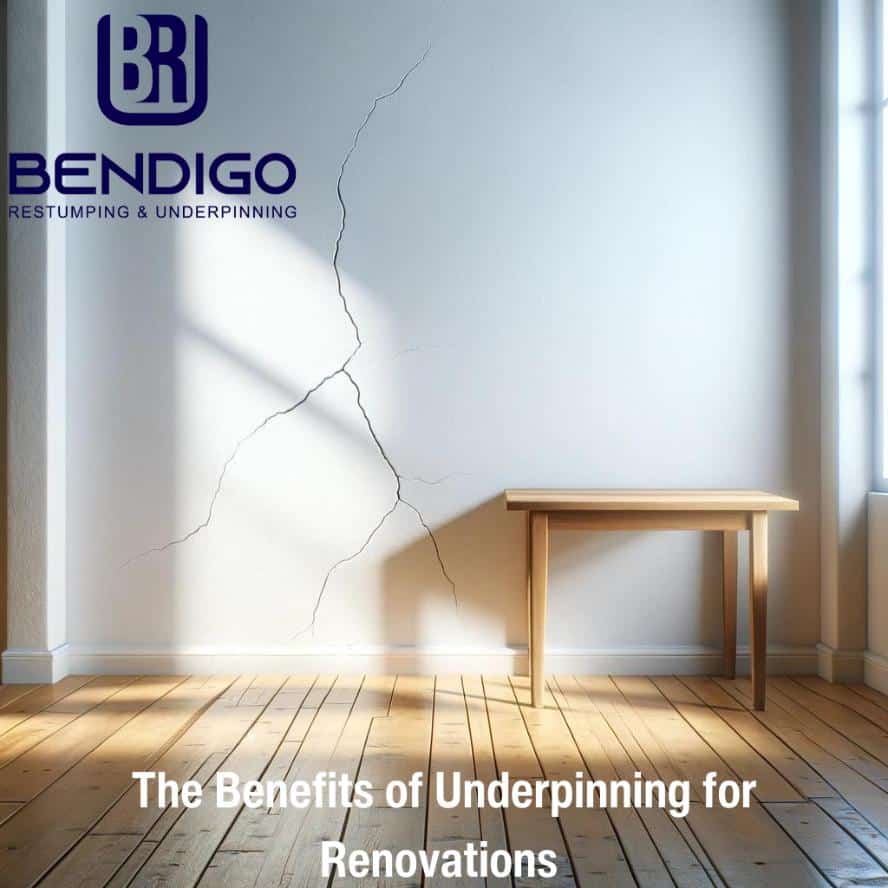The main benefits of underpinning for renovations are increased stability, resolved foundation issues, and enhanced safety. People can also improve their property value and save on costs.
Hiring the right Bendigo underpinning and restumping company to do the job can go a long way in ensuring these advantages.
In this post, we’ll expand more on the benefits of underpinning for renovations.
Increased Stability for Adding Floors
Underpinning enhances the stability of existing structures, a crucial benefit when adding additional floors to a building. When done correctly, this process avoids mistakes in underpinning and involves reinforcing the foundation, enabling it to bear the increased load from new construction. By strengthening the base, underpinning minimises risks of structural damage or uneven settling, which are common concerns in vertical expansions.
It ensures the building remains safe and structurally sound, even with extra floors’ added weight and complexity. This stability is vital for both the structure’s longevity and its occupants’ safety, making underpinning a key step in responsible, ambitious renovation projects.
Ability to Repair Existing Foundation Issues
Underpinning offers a pivotal advantage in renovations by allowing for the repair of existing foundation issues. Over time, buildings may develop foundation problems due to soil movement, environmental conditions, or initial construction flaws. Underpinning addresses these issues head-on, providing a means to strengthen and stabilise the foundation.
It involves extending the depth or width of the foundation to more stable soil, thereby rectifying issues like cracks, subsidence, and uneven settling. This process not only restores the structural integrity of the building but also prevents future complications, ensuring a safer and more durable structure for years to come.
Enhanced Safety for the Building’s Occupants
Enhancing the safety of a building’s occupants is a paramount benefit of underpinning, particularly when it involves the reinforcement of concrete slabs. This process bolsters the building’s foundation, significantly reducing the risk of structural failures that could endanger residents or users.
By addressing underlying issues with concrete slabs and the foundation, underpinning ensures a more robust and stable base for the building. This enhanced stability is crucial in areas prone to ground movement or heavy loads. It offers peace of mind to occupants by safeguarding them against potential hazards.
Improved Property Value
Underpinning can significantly improve a property’s value, making it an attractive investment for homeowners. This process enhances the structural integrity of a building, addressing any foundational issues that might detract from its worth. By ensuring the stability and longevity of the structure, underpinning makes the property more appealing to potential buyers who value safety and durability.
Additionally, the process opens up possibilities for future renovations, such as adding extra floors or making substantial alterations, which can further increase the property’s market appeal. Underpinning secures the building physically and boosts its financial value, making it a wise choice for long-term asset enhancement.
Cost Comparison With Alternative Options
Underpinning emerges as a cost-effective solution when compared to alternative options for addressing foundational issues. Alternatives often involve extensive construction work, such as completely rebuilding parts of a structure, which can be significantly more expensive and disruptive.
In contrast, underpinning targets the specific area of concern and rectifies it without the need for large-scale demolition or rebuilding. This focused approach saves on material costs, reduces labour expenses, and minimises the time the property is under construction.


